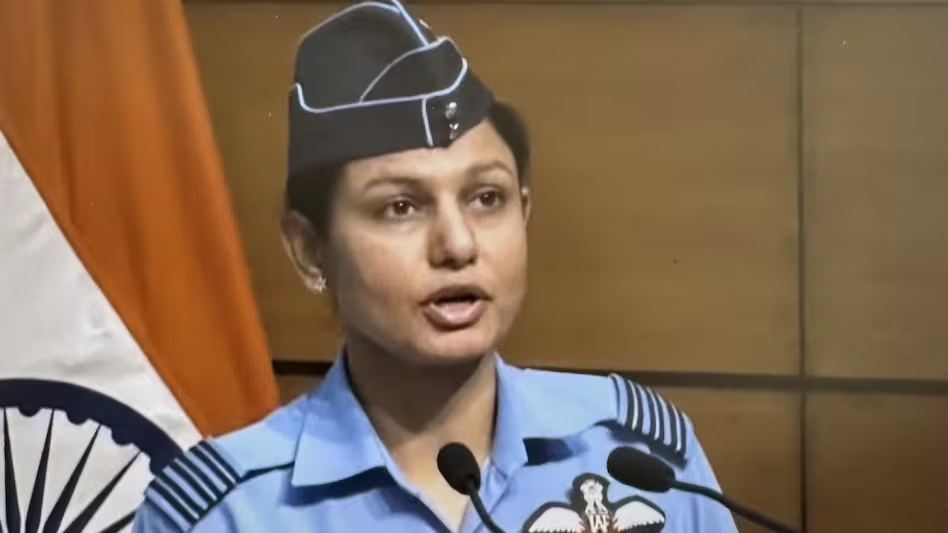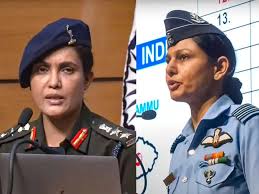
In a groundbreaking revelation that has captured national and international attention, Defence Minister Rajnath Singh has hinted at the inclusion of women pilots in Operation Sindoor, an anti-terror mission targeting terror infrastructure in Pakistan. This disclosure underscores India’s evolving approach to gender inclusivity in its armed forces, symbolizing a significant milestone in military history. Although the exact details remain classified, the implications of this statement are monumental, especially for the role of women in defense.
A Landmark in Military Inclusivity
The participation of women pilots in combat operations has long been a subject of debate and policy evolution in India. With the Indian Air Force (IAF) inducting women fighter pilots since 2016, the trajectory toward inclusivity has been steadily progressive. Operation Sindoor, believed to have targeted high-value terror hubs across the border, would mark one of the most high-profile combat missions involving women officers. Singh’s statement, though not explicitly detailing their roles, hints at the pivotal contribution of these trailblazers.
This revelation could pave the way for a deeper understanding of the challenges and opportunities faced by women in combat roles. It also aligns with the global trend of gender parity in defense forces, reinforcing India’s commitment to modernization and equality. Moreover, it represents a step toward dismantling long-standing stereotypes about women’s abilities in high-pressure and high-risk scenarios.
Operation Sindoor: A Strategic Triumph
Operation Sindoor—a name synonymous with strategic precision—was reportedly aimed at neutralizing terror camps that posed an imminent threat to national security. While the government has maintained operational secrecy, the mission is understood to have utilized advanced aerial tactics and state-of-the-art weaponry.
The involvement of women pilots adds a layer of complexity and pride to this mission. Experts believe their participation not only demonstrates their skill and resilience but also sends a powerful message to adversaries about India’s unwavering resolve and inclusivity. The integration of women pilots showcases a strategic advantage, as their training and execution in this high-stakes operation reflect the robust capabilities of the IAF.
The mission’s success also points to India’s growing prowess in counter-terror operations. By employing precision strikes to dismantle terror infrastructure, Operation Sindoor has further solidified India’s stance against cross-border terrorism. The inclusion of women in such a critical mission amplifies the significance of this accomplishment, setting a precedent for future operations.
Women in Indian Armed Forces: A Historical Perspective
The inclusion of women in the Indian armed forces has been a gradual yet transformative journey. From serving in medical and logistical roles to taking command positions, women have shattered glass ceilings at every stage. The decision to induct women fighter pilots in 2016 was a turning point, challenging stereotypes and setting a precedent for gender equality in traditionally male-dominated domains.
Women pilots have since demonstrated exceptional capabilities, participating in various high-stakes operations and earning accolades for their professionalism. Operation Sindoor, if officially confirmed, would solidify their position as integral to India’s defense strategy. This milestone is also reflective of broader societal changes, where women are increasingly taking on leadership roles in fields previously considered inaccessible.
The journey of women in the armed forces has been marked by perseverance and determination. The first batch of women officers, inducted into the armed forces in the early 1990s, faced numerous challenges, from societal biases to infrastructural inadequacies. Over the years, however, these trailblazers have not only proved their mettle but have also paved the way for subsequent generations of women officers.
The Global Context of Gender Inclusivity in Defense
India’s move to include women in combat roles is part of a broader global trend. Countries like the United States, Israel, and the United Kingdom have long integrated women into frontline roles, recognizing their potential to contribute to operational success. The reported participation of Indian women pilots in Operation Sindoor places India alongside these nations, showcasing its commitment to harnessing the full potential of its human resources.
Globally, women have played crucial roles in military operations, from intelligence gathering to leading combat missions. Their inclusion has often enhanced the operational effectiveness of missions, bringing diverse perspectives and approaches to problem-solving. India’s strides in this direction highlight its readiness to embrace modern warfare’s multifaceted demands, where inclusivity and innovation are key.
Challenges and Opportunities Ahead
While the reported inclusion of women in Operation Sindoor is a landmark achievement, it also brings to light several challenges. Combat roles demand not just physical endurance but also mental resilience, situational awareness, and teamwork. The armed forces must ensure adequate training, support systems, and infrastructure to empower women officers effectively.
Moreover, societal perceptions and institutional biases must be addressed to create a truly inclusive environment. The success of missions like Operation Sindoor could serve as a catalyst for broader acceptance of women in combat roles, inspiring future generations to consider careers in defense. It is equally important to ensure that policies and practices are updated to reflect the evolving needs of a gender-diverse military workforce.
The journey ahead also requires a focus on mentorship and leadership development for women officers. By creating platforms for knowledge-sharing and skill-building, the armed forces can ensure that women officers are well-equipped to take on complex roles and responsibilities. Such initiatives would not only enhance individual performance but also contribute to the overall effectiveness of the armed forces.
The Role of Training and Technology
Training and technology are pivotal in preparing women for combat roles. The IAF’s rigorous training programs, designed to test physical and mental limits, have ensured that women pilots are as combat-ready as their male counterparts. Additionally, advancements in technology have mitigated some of the physical demands traditionally associated with combat roles, enabling women to perform effectively in various capacities.

The integration of cutting-edge technology in operations like Sindoor underscores the importance of continuous learning and adaptation. Women pilots, with their adaptability and analytical skills, have demonstrated their ability to leverage technology to enhance mission outcomes. This blend of human capability and technological innovation represents the future of modern warfare.
Looking Forward: A New Era for Indian Defense
Rajnath Singh’s statement marks the dawn of a new era for the Indian armed forces. The reported participation of women pilots in Operation Sindoor is not just a testament to their capabilities but also a reflection of India’s progressive vision for its military. As more women break barriers and take on challenging roles, the Indian armed forces stand to gain from their diverse perspectives, skills, and leadership.
This development also has profound implications for India’s strategic positioning on the global stage. By embracing inclusivity and leveraging the potential of all its citizens, India sends a strong message about its values, capabilities, and aspirations as a rising power.
Furthermore, the success of women in combat roles has the potential to inspire broader societal changes. As more stories of their courage and determination come to light, they serve as role models for young girls aspiring to join the armed forces. This ripple effect could lead to increased representation of women in other male-dominated fields, fostering a culture of equality and empowerment.
The Path to Equality: Beyond the Battlefield
While the inclusion of women in combat roles is a significant step forward, achieving true gender equality requires sustained effort across various dimensions. Beyond the battlefield, women officers must be given equal opportunities for career advancement, access to leadership roles, and participation in decision-making processes. These measures are essential to create a truly inclusive and equitable armed forces.
Additionally, the narratives surrounding women in defense must evolve to highlight their achievements and contributions. By celebrating their successes and addressing the challenges they face, society can foster a supportive environment that encourages more women to pursue careers in defense. This shift in perception is crucial for breaking down barriers and challenging traditional gender norms.
A Tribute to Trailblazers
The reported participation of women pilots in Operation Sindoor is a tribute to the trailblazers who paved the way for their inclusion. From the first women officers inducted into the armed forces to the current generation of fighter pilots, their journey is a testament to the power of perseverance and determination. Their stories of courage and resilience serve as an inspiration to all, reminding us of the limitless potential of human spirit.
As India continues to modernize its armed forces and embrace gender inclusivity, the contributions of women officers will undoubtedly play a pivotal role in shaping its future. Operation Sindoor stands as a shining example of what can be achieved when talent and potential are recognized and nurtured, regardless of gender.
Conclusion: Towards a More Inclusive Future
The reported role of women pilots in Operation Sindoor marks a defining moment in India’s defense history. It is a celebration of their capabilities, a reflection of the armed forces’ progressive vision, and a step toward greater gender equality. As India moves forward, the lessons learned from this mission will serve as a foundation for building a more inclusive and empowered military.
This milestone also calls for continued dialogue and action to address the challenges faced by women in defense. By fostering an environment of inclusivity and respect, India can unlock the full potential of its armed forces and set an example for the world. The future of Indian defense is bright, and with the contributions of women officers, it promises to be even brighter.

